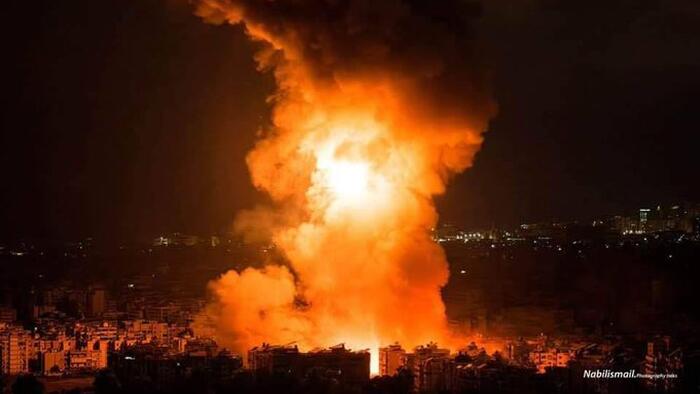In a significant escalation of tensions in the Middle East, Israel launched precision strikes on Iranian military targets on a Saturday morning, signaling an aggressive counteraction weeks after Iran had fired approximately 180 ballistic missiles toward Israel on October 1. These Israeli attacks predominantly targeted the headquarters of the Iranian Revolutionary Guard, leading to explosions that were reported in Tehran and other regions. In an unusual move, the Israeli military confirmed these strikes and declared that both its offensive and defensive capabilities were fully prepared for ensuing developments. According to reports from the Wall Street Journal, the United States was informed in advance of Israel’s military actions, with a U.S. official acknowledging their prior knowledge of the strikes.
Eyewitness accounts from Tehran described the atmosphere of urgency and chaos as five large explosions were heard within a span of approximately ten seconds. This immediate proximity to civilian life has raised concerns among residents, with reports of frequent detonations reverberating throughout the city. Iranian state media indicated that some of the blasts were in the vicinity of Imam Khomeini International Airport. The situation has prompted Iranian Air Force jets to be deployed from western parts of the country, evidencing an immediate military response among Iranian forces. Reports of explosions surfaced not only in Tehran but also in other cities like Isfahan and Mashhad, underscoring the widespread nature of the strikes.
As the situation unfolded, Iranian officials vowed retaliation, particularly aimed at Gulf states and U.S. allies whose territories might assist Israel’s operations. Importantly, Israel assured the U.S. that the strikes would not target Iranian oil or nuclear facilities, a statement designed to reduce the chances of a wider conflict. U.S. and Israeli officials expressed belief that Iran would respond militarily but hoped that any retaliation would be measured. This cautious optimism was bolstered by a series of strategic U.S. military deployments in the region aimed at deterring a strong Iranian reaction while simultaneously assisting Israel in its defense against future missile threats.
Preparations by the U.S. military included the deployment of a THAAD missile defense system to Israel, which involves U.S. soldiers potentially engaging in active defense operations should hostilities escalate further. These developments occurred after U.S. Air Force F-16s from Germany were stationed in the region, signaling a robust military presence meant to safeguard both American and Israeli interests as tensions mounted. The deployment and assertiveness of U.S. military assets underscore the complicated dynamics of international relations at play, where regional conflicts often require global powers to reassess their stances and military readiness.
The unraveling events drew attention not just to military maneuvers but also to strategic shifts that could affect long-term security in the region. The offensive by Israel represents a critical juncture in its ongoing confrontation with Iran, which has been marked by numerous exchanges of belligerence over the years. As the two nations engage in this cycle of retaliation and counterstrike, the potential for escalation remains a pressing concern, especially given the involvement of other regional players and their respective alliances. The risk of a broader conflict exacerbates existing tensions and could lead to ripple effects beyond the immediate theater of war.
Meanwhile, an investigation by the FBI into a leak of confidential U.S. intelligence hints at a complex layer of information management surrounding these military operations. The disclosure reportedly encompassed sensitive details about Israel’s planned strike, emphasizing the intricate balance of trust and security in high-stakes international relations. As the dust settles on this latest round of conflicts, both Israel and Iran will likely continue to navigate a volatile landscape characterized by shifting allegiances, military readiness, and the search for strategic advantage amid continuing hostilities. The future remains uncertain as each side weighs its options in a climate fraught with potential for both escalation and diplomatic resolution.

